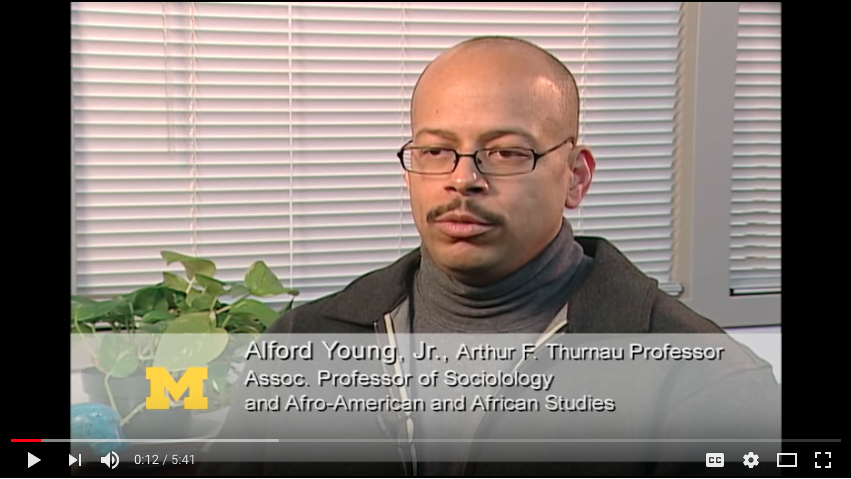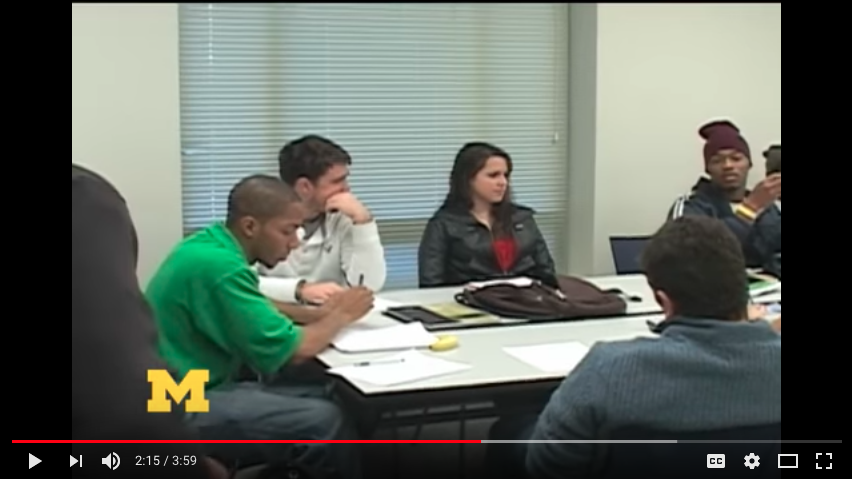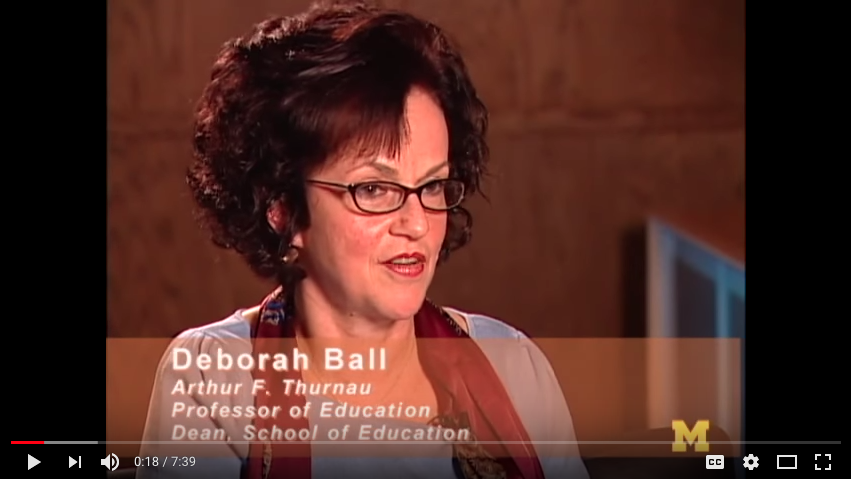Resources
Resources from CRLT and Other Teaching Centers
Note: OccP stands for "Occasional Paper(s)"
Arthur F. Thurnau Professors' videos on Engaging Students in the Classroom and Beyond - These videos showcase some of the innovative active learning techniques already being used throughout the University.
CRLT Resources on Flipped Classrooms - Although flipped classrooms and active learning are not synonymous, many techniques overlap and may be useful in both contexts.
"The Student Teams" Occasional Paper is focused on the engineering classroom, but many principles carry over to other contexts. It begins by discussing the five components of effective group work, and states that the “purpose in this OccP is to provide instructors with a framework for ensuring that student teams possess these five traits and are set up for success.” The four-part framework of designing good team assignments, constructing teams carefully, teaching teamwork skills, and assessing student teams is introduced. Best practices and tips are presented for each.
The University of Georgia SEER Center has a collection of REALISE Videos (Repository for Envisioning Active-Learning Instruction in Science Education). You can view uninterrupted glimpses into a large active learning classroom, watch testimonials and evidence regarding the benefits of active learning, and view step-by-step instructions for implementing active learning strategies.
Vanderbilt’s Active Learning Site has a great overview of active learning and provides the foundational research from the field.
Foundational Research and Further Reading
Bonwell’s Active Learning: Creating Excitement in the Classroom (1991) provides a summary of a workshop that presents practical tips for using active learning in the classroom. It also presents general characteristics of an active learning classroom and a preliminary active learning continuum (upon which the CRLT continuum is based). Early research is presented about the importance of active learning in terms of content retention, as well as barriers that present faculty from using active learning (and solutions to those barriers). This reference also provides a framework for our own OccP active learning reflective checklist and associated questionnaire.
Eison’s Using Active Learning Instructional Strategies to Create Excitement and Enhance Learning (2010) is very similar to the Bonwell citation. In addition to providing some helpful citations regarding the benefits of active learning, it describes faculty-perceived barriers to active learning, as well as a list of low vs. high-risk active learning strategies. Tips are provided for turning traditional lectures into interactive ones, followed by a section of other active learning techniques for creating excitement in the classroom.
Freeman’s 2014 paper presents a meta-analysis of 225 studies reporting either exam scores or failure rates related to traditional lecture vs. active learning in undergraduate STEM courses. A general summary of findings is that average exam scores improve by around 6% in active learning classes, and students taking courses with traditional lecture are 1.5 times more likely to fail than those in classes with active learning.
Hake’s interactive engagement paper (1998) analyzed learning gains for students in 62 introduction physics courses as assessed by the Force Concept Inventory. Results support that interactive engagement results in superior learning gains over traditional lecture, although gains are not attributed to specific techniques.
McCarthy’s paper (2000) is useful in showing benefits of active learning outside of the STEM context (i.e. in history and political science). The two techniques explored are group role-play in history and a collaborative exercise in political science. The latter technique “required students to analyze critically the wording of opinion poll questions as a source of potential distortion in opinion poll surveys.” The authors claim that students who participated in active learning performed significantly better than those who did not.
Prince’s Does Active Learning Work? (2004) is a key paper highlighting the benefits of active learning, with emphasis in an engineering context. It provides helpful definitions for active learning, collaborative learning, cooperative learning, and problem-based learning. It explains some common pitfalls such as evidence to support active learning is not always clear -- it’s not always evident what is being studied or how gains are being measured.
Kothiyal, Murthy, and Iyer's 2014 paper discusses the classroom active learning strategy Think-Pair-Share (TPS). This strategy involves students working on activities, first individually, then in pairs, and finally as a whole class. Through a quasi-experimental study, it turns out that students who learned via TPS performed significantly better on a post-test than students who learned the same concept via lecture. Data from focus group interviews and a survey showed that the majority of students agreed that TPS activities helped improve their conceptual understanding.
Works Cited
Bonwell, C.C. & Eisen, J.A. (1991). Active Learning: Creating Excitement in the Classroom. School of Education and Human Development, George Washington University: Washington DC.
FEison, J. (2010). Using active learning instructional strategies to create excitement and enhance learning. Jurnal Pendidikantentang Strategi Pembelajaran Aktif (Active Learning) Books, 2.
Finelli, C.J., Nguyen, K., Demonbrun, M., Borrego, M., Prince, M., Husman, J., Henderson, C., Shekhar, P., & Waters, C. K. (2018). Reducing student resistance to active learning: Strategies for instructors. Journal of College Science Teaching, 47(5), 80-91.
Freeman, S., Eddy, S. L., McDonough, M., Smith, M. K., Okoroafor, N., Jordt, H., & Wenderoth, M. P. (2014). Active learning increases student performance in science, engineering, and mathematics. Proceedings of the National Academy of Sciences, 111(23), 8410-8415.
Hake, R. R. (1998). Interactive-engagement versus traditional methods: A six-thousand-student survey of mechanics test data for introductory physics courses. American Journal of Physics, 66(1), 64-74.
Kothiyal, A., Murthy, S., & Iyer, S. (2014). Think-pair-share in a large CS1 class. Proceedings of the 2014 Conference on Innovation & Technology in Computer Science Education - ITiCSE '14. doi:10.1145/2591708.2591739
McCarthy, J. P., & Anderson, L. (2000). Active learning techniques versus traditional teaching styles: two experiments from history and political science. Innovative Higher Education, 24(4), 279-294.
Prince, M. (2004). Does Active Learning Work? A Review of the Research. Journal of engineering education, 93(3), 223-231.





